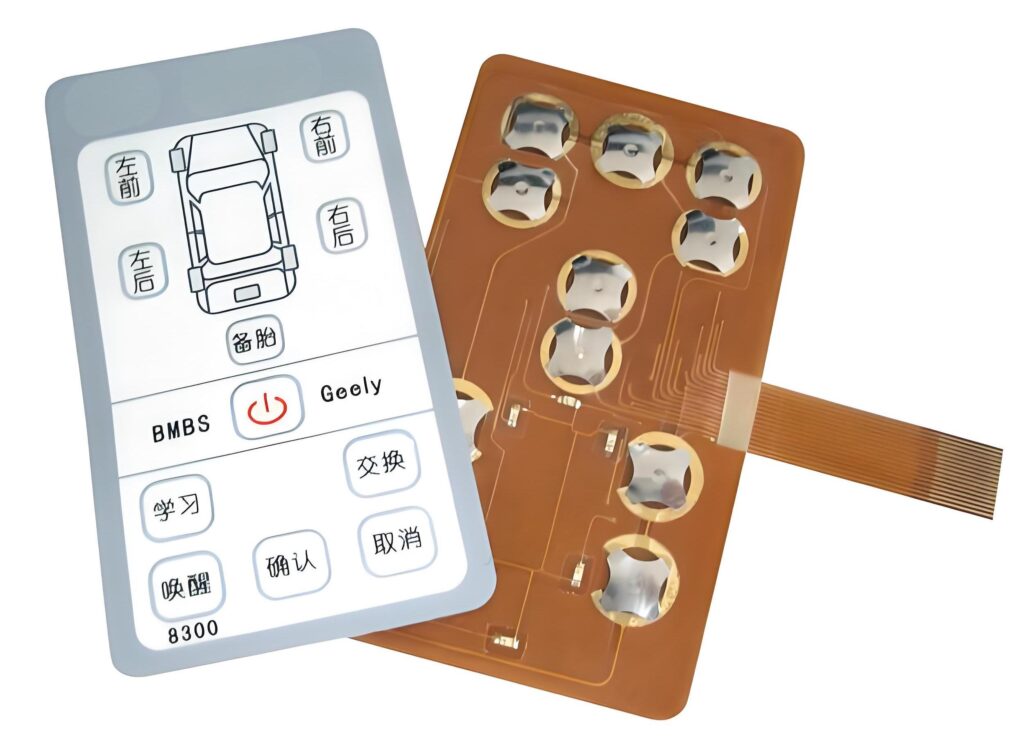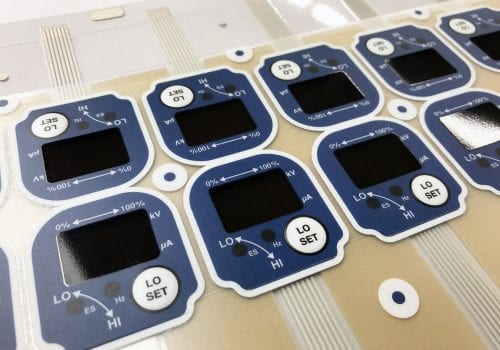How membrane switch is improving user interaction in medical devices
Understanding the Significance of Membrane Change in Modern Electronics
Membrane layer buttons are essential parts in modern-day digital gadgets. They supply a mix of functionality and design that boosts user interaction. Their light-weight and durable nature makes them ideal for different applications. As markets evolve, the need for customization and advanced functions grows. Recognizing how membrane changes add to development exposes their importance fit the future of electronic devices. What lies ahead for this modern technology?
The Fundamentals of Membrane Switch Over Technology
Although frequently overlooked, membrane layer button modern technology plays a vital duty in the contemporary electronics landscape - membrane switch. These tools, composed of multiple layers, work as interface for numerous electronic items, ranging from family home appliances to medical tools. A regular membrane button includes a visuals overlay, a spacer layer, and a circuit layer, which are carefully constructed to produce a functional interface.When stress is related to the overlay, the circuit layer is completed, enabling signals to be transferred to the device. This technology is recognized for its adaptability, allowing modification in form, layout, and performance to meet particular customer requirements. In addition, membrane buttons are lightweight and thin, making them ideal for applications where room is a costs. Their sturdiness and resistance to ecological variables further improve their allure, guaranteeing they can endure harsh conditions while keeping performance. In general, membrane switch modern technology is indispensable to producing effective and user-friendly electronic devices

Secret Benefits of Membrane Changes
Membrane layer changes offer a number of crucial advantages that make them a recommended option in numerous digital applications. Their style allows for a small kind element, enabling manufacturers to develop smooth and light-weight gadgets. Additionally, membrane layer switches are resistant to dust, wetness, and chemicals, which boosts their resilience and long life popular settings. The tactile feedback provided by these buttons can improve user experience, making them easy and intuitive to operate.Furthermore, membrane layer switches can be tailored with diverse graphics and colors, allowing for one-of-a-kind branding possibilities. The production procedure is usually cost-effective, particularly for high-volume production, as it decreases assembly time and simplifies design. Ultimately, membrane changes require minimal maintenance, adding to lower overall operational prices. These advantages highlight their expanding appeal in contemporary electronics, where reliability and user-friendly interfaces are important.

Applications Throughout Different Industries
The adaptability of membrane switches over enables their widespread fostering across numerous sectors. In the medical field, they are frequently made use of in diagnostic devices and individual surveillance systems, supplying a long lasting interface immune to impurities. The automotive market uses membrane buttons for control panel controls, enhancing individual experience with smooth styles that hold up against extreme conditions. In consumer electronic devices, they work as control panels for gadgets such as microwaves and coffee makers, supplying an easy to use interface that is simple to tidy. The aerospace industry uses membrane buttons in cockpit controls, where reliability and room efficiency are critical. Furthermore, the industrial market leverages these switches in machinery and control systems to ensure durable procedure sought after atmospheres. This wide series of applications underscores the versatility of membrane switches, making them important components in enhancing capability and user communication across varied technological landscapes.
Modification and Layout Flexibility

Future Fads in Membrane Switch Growth
Emerging fads in membrane layer button growth indicate a growing focus on enhanced functionality and assimilation with wise innovations. As consumer demand for much more innovative electronic tools boosts, suppliers are focusing on developing membrane switches over that not just serve fundamental functional duties yet also incorporate features like touch level of sensitivity, backlighting, and haptic feedback.Furthermore, advancements in products are expected to boost durability and environmental resistance, making membrane layer switches ideal for varied applications in industries such as health care, automobile, and customer electronic devices. The combination of capacitive touch modern technology is likely to become more prevalent, allowing for sleeker styles and enhanced customer interfaces. membrane switch.Additionally, the surge of the Web of Points (IoT) is triggering the advancement of membrane layer switches that can communicate wirelessly with various other gadgets, improving interconnectivity. On the whole, the future of membrane button modern technology great post to read shows up promising, driven by innovation and the pursuit of user-friendly solutions
Frequently Asked Concerns
Exactly How Do Membrane Switches Over Compare to Traditional Mechanical Switches?
Membrane layer switches, being extra space-efficient and offering a sleek style, comparison with conventional mechanical switches that give responsive responses. The previous frequently include customizable graphics, while the latter generally guarantee durability and reliability in numerous applications.
What Materials Are Generally Used in Membrane Layer Change Production?
Membrane layer switches are normally created making use of materials such as polyester, polycarbonate, and published conductive inks. These products give toughness, responsiveness, and adaptability, making them ideal for various applications in electronic devices and interface.
Can Membrane Layer Changes Be Repaired or Recycled?
Membrane layer switches can usually be repaired, specifically if small issues occur, such as sticky failure or surface area damages. Full reuse is commonly limited due to use and prospective deterioration of materials over time.
Exactly How Do Environmental Variables Influence Membrane Switch Over Performance?
Ecological elements, such as exposure, temperature level, and humidity to chemicals, significantly affect membrane button performance. Extreme problems can cause deterioration, influencing responsiveness and durability, inevitably jeopardizing the capability of the tool in various applications.
What Is the Normal Lifespan of a Membrane Change?
The typical life expectancy of a membrane switch usually ranges from 1 to 5 million actuations, relying on variables such as usage frequency, ecological conditions, and the materials utilized in production, affecting longevity and performance long life. A regular membrane layer button consists of a visuals overlay, a spacer layer, and a circuit layer, which are carefully put together to produce a functional interface - membrane switch.When stress is applied to the overlay, the circuit layer is finished, permitting signals to be transmitted to the gadget. The responsive responses supplied by these switches can improve user experience, making them very easy and intuitive to operate.Furthermore, membrane layer switches can be customized with varied graphics and shades, allowing for unique branding opportunities. As customer demand for a lot more sophisticated digital gadgets boosts, producers are concentrating on creating membrane changes that not only offer fundamental operational functions yet likewise integrate functions like touch level of sensitivity, backlighting, and haptic feedback.Furthermore, developments in materials are anticipated to improve durability and ecological resistance, making membrane switches over ideal for diverse applications in industries such as healthcare, vehicle, and customer electronics. The integration of capacitive touch innovation is find this likely to become much more prevalent, permitting for sleeker designs and boosted user interfaces.Additionally, the increase of the Web of Things (IoT) is triggering the advancement of membrane layer switches over that can communicate wirelessly with various other gadgets, enhancing interconnectivity. Membrane layer buttons, being more space-efficient and offering a streamlined style, comparison with typical mechanical buttons that provide responsive comments